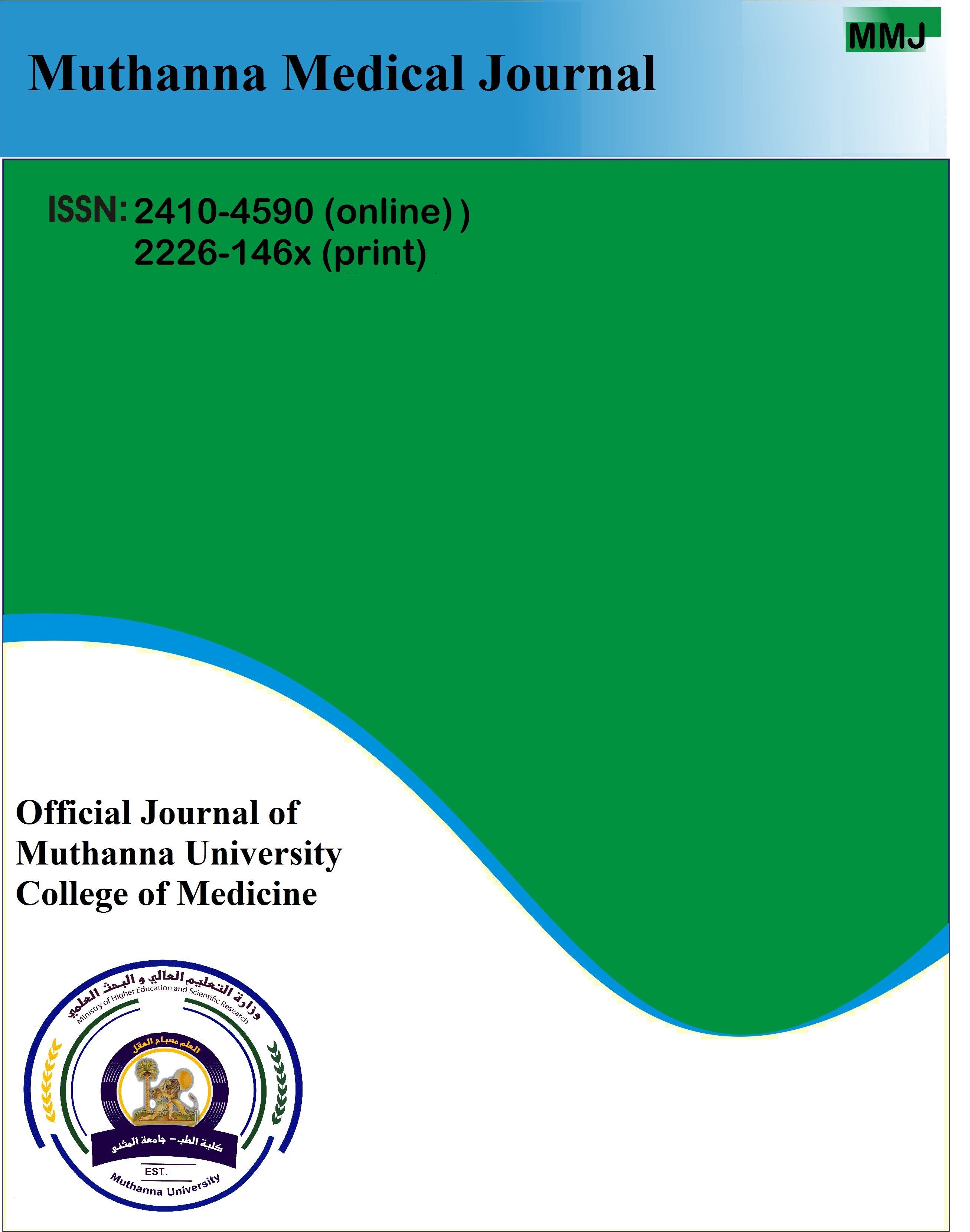Muthanna Medical Journal
Volume 9, Issue 2, 2022 Page 155-167
http://dx.doi.org/10.52113/1/1/2022-155-167
Nasser Ghaly Yousif ¹*, Mohammed Hassan Younise ², Fadhil alamran ³, Douglas Hainz 4, Ahmed Altimimi ²
Correspondence author: yousif_ghaly@mu.edu.iq
¹Al muthanna University, Al Muthanna Medical College
²Samawa health directorate, Samawa
³Kufa University, Medical College
4 Australian National University
²MOH
Received 11 August 2022, Accepted 11 November 2022, Available online 04 December 2022.
Copyright © 2022 NY. This is article distributed under the terms of the Creative Commons Attribution License http://creativecommons.org/licenses/by/4.0), which permits unrestricted use, distribution, and reproduction in any medium, provided the original work is properly cited
Copyright © 2022 NY. This is article distributed under the terms of the Creative Commons Attribution License http://creativecommons.org/licenses/by/4.0), which permits unrestricted use, distribution, and reproduction in any medium, provided the original work is properly cited
Abstract
Acute myeloid leukemia (AML) is a malignancy of proliferative, clonal, abnormally, or poorly differentiated cells of the hematopoietic system, characterized by clonal evolution and genetic heterogeneity. Mutations of the FMS-like tyrosine kinase 3 (FLT3) gene occur in approximately 30% of all AML cases, with the internal tandem duplication (ITD) representing the most common type of FLT3 mutation. FLT3-ITD is a common driver mutation that presents with a high leukemic burden and confers a poor prognosis in patients with AML. In this systematic review and meta-analysis, we present a detailed review of current clinical evidence of FLT3 inhibitors and their use in AML, and discrepancies association between FLT3 inhibitors use and prognosis of acute myeloid leukemia and maintenance setting.
Keywords: FLT3 inhibitors, Acute myeloid leukemia, Systematic review, FMS-like tyrosine kinase 3